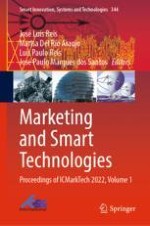This book includes selected papers presented at the International Conference on Marketing and Technologies (ICMarkTech 2022), held at Universidade de Santiago de Compostela, Spain, during 1 – 3 December 2022. It covers up-to-date cutting-edge research on artificial intelligence applied in marketing, virtual and augmented reality in marketing, business intelligence databases and marketing, data mining and big data, marketing data science, web marketing, e-commerce and v-commerce, social media and networking, geomarketing and IoT, marketing automation and inbound marketing, machine learning applied to marketing, customer data management and CRM, and neuromarketing technologies.
